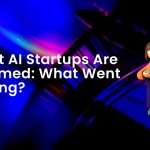Quick Take
Linus Torvalds’ claim that AI is “90% marketing and 10% reality” has sparked debates on the fine line between inflated expectations and tangible progress.
Understanding the Controversy
Linus Torvalds, a legendary figure in software engineering, recently declared that AI’s progress is “90% marketing and 10% reality.” While this sentiment resonated with some, it also drew criticism for oversimplifying a complex landscape. To unpack this, we must distinguish between hype-driven narratives and real-world advancements shaping AI’s current trajectory.
The Marketing Overload
From flashy headlines to startups vying for venture capital, marketing plays an undeniable role in AI’s prominence. Many companies position themselves as leaders in “revolutionary AI” without delivering meaningful innovation. This noise makes it challenging for both consumers and investors to discern credible developments from overpromised concepts.
However, not all marketing is baseless. The AI field thrives on enthusiasm and attention, which drives funding and adoption. Detractors argue that without this buzz, even groundbreaking technologies might fail to gain traction.
The 10% That’s Transforming Industries
Torvalds’ critique may discount the tangible impact AI is already having in numerous sectors. Tools like ChatGPT, AlphaFold, and autonomous systems are not just demos; they’re reshaping workflows, enabling discoveries, and cutting costs. For instance, AI applications in legal, healthcare, and logistics demonstrate genuine productivity gains, even as challenges like hallucinations and ethical concerns persist.
The key takeaway here is that AI’s progress is iterative. It’s not a binary leap from marketing to reality but rather a journey of gradual improvements and integration into practical use cases.
Perspectives from the AI Community
Industry professionals largely agree with the duality of AI’s current state. Many admit that inflated claims about AI’s capabilities can lead to unrealistic expectations, but they also emphasize its undeniable potential. As one commenter put it, “Marketing gets the attention, but the 10% of real innovation is where the true excitement lies.”
Others point out that hype often overshadows smaller, incremental advancements that drive lasting change. They warn against dismissing the broader implications of AI simply because progress doesn’t yet align with the boldest predictions.
Moving Beyond the Debate
The AI landscape is undeniably noisy, but meaningful progress continues to emerge. Torvalds’ statement serves as a reminder to approach AI with both skepticism and optimism. The challenge lies in cutting through the marketing fluff to appreciate and invest in the genuine advancements that are shaping the future.
As AI evolves, the focus should shift from proving skeptics wrong to delivering impactful, scalable solutions. For stakeholders, this means navigating the balance between excitement and realism—a balance that could ultimately define the next chapter in AI’s story.


